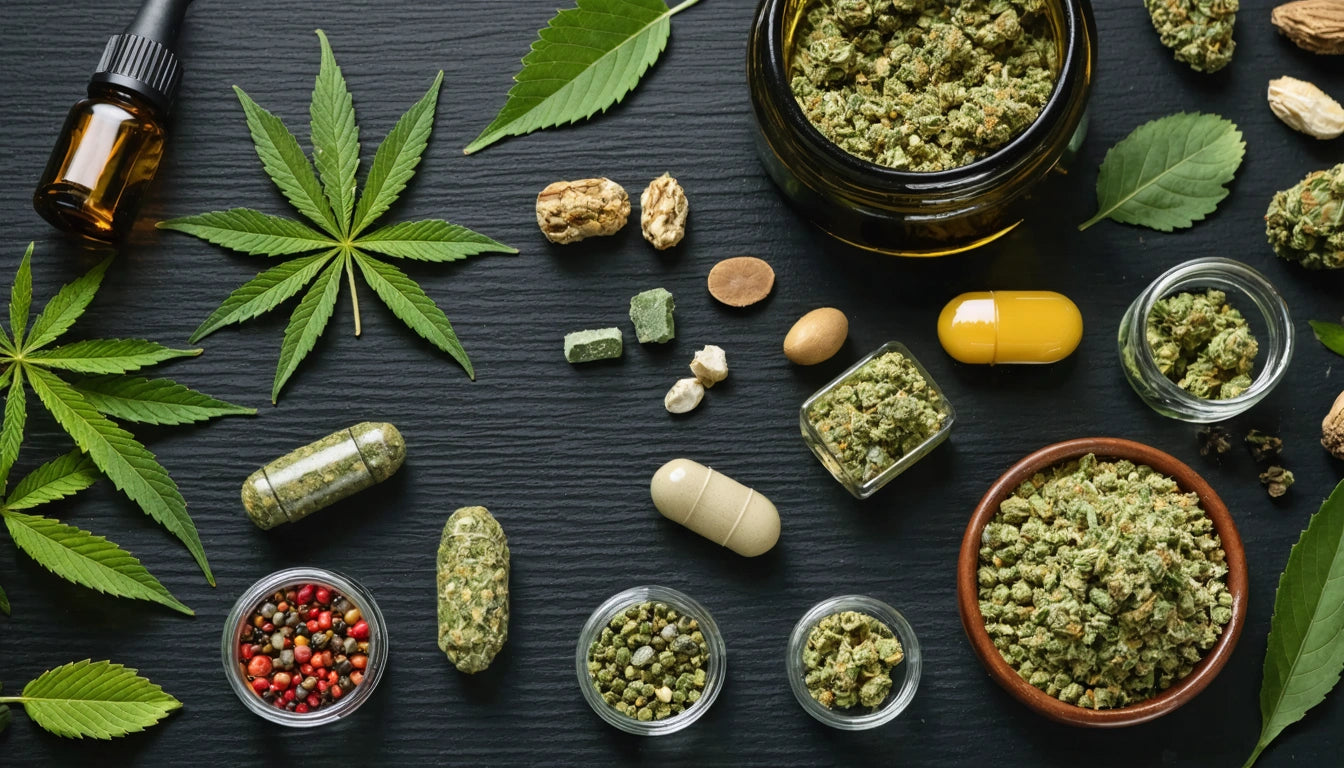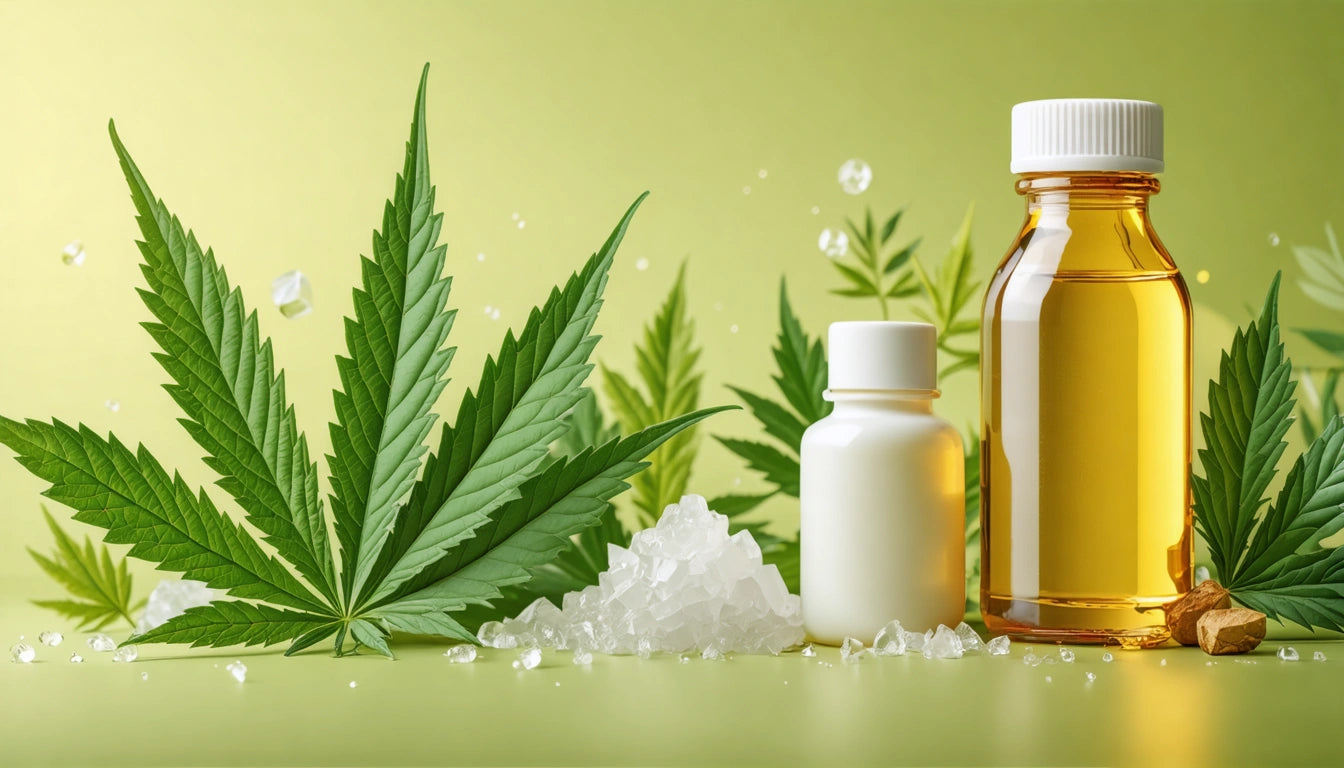Table of Contents
Terpenes are aromatic compounds responsible for the distinctive scents and flavors in cannabis and countless other plants. Beyond their sensory appeal, these compounds play crucial roles in determining the effects and potential therapeutic benefits of different cannabis strains. Understanding the most common terpenes found in popular strains can help consumers and industry professionals make informed decisions about product selection and development.
Understanding Terpenes: Nature's Aromatic Compounds
Terpenes are volatile organic compounds produced in the trichomes of the cannabis plant, alongside cannabinoids like THC and CBD. While over 200 terpenes have been identified in cannabis, only about 20 appear in significant concentrations. These compounds evolved primarily as defensive mechanisms to repel predators and attract pollinators.
According to this overview of terpenes, these aromatic molecules contribute significantly to the entourage effect, a phenomenon where cannabis compounds work synergistically to enhance or moderate each other's effects. This interaction between terpenes and cannabinoids helps explain why different strains with similar THC levels can produce markedly different experiences.
Dominant Terpenes in Cannabis: Profiles and Effects
Myrcene
Myrcene is the most abundant terpene in most cannabis varieties, often comprising up to 50% of a strain's terpene profile. It produces an earthy, musky aroma with notes of cloves and is believed to contribute to the relaxing effects commonly associated with indica strains.
Limonene
Recognizable by its citrusy scent, limonene is prevalent in sativa-dominant strains. Research suggests it may have mood-elevating properties and potential anti-anxiety effects. It's also found in citrus fruit peels and many cleaning products.
Pinene
As the name suggests, pinene offers a fresh pine scent and is the most common terpene in the natural world. It exists in two forms (alpha and beta) and may help counteract some of THC's memory-impairing effects while promoting alertness.
Linalool
With a floral, lavender-like aroma, linalool is less abundant but highly impactful. It's known for potential sedative and anxiety-reducing properties, similar to its effects in lavender essential oil.
Caryophyllene
Unique among terpenes, beta-caryophyllene can directly activate cannabinoid receptors. It provides a spicy, peppery profile and appears in many strains marketed for pain relief. This article on terpene effects explores how caryophyllene may influence mood and comfort levels.
Strain-Specific Terpene Profiles
Different cannabis strains exhibit characteristic terpene combinations that create their unique effects and sensory profiles:
- Blue Dream: Typically high in myrcene and pinene, contributing to its balanced effects and sweet berry aroma with pine undertones
- OG Kush: Rich in myrcene, limonene, and caryophyllene, creating its distinctive fuel-like aroma with citrus notes
- Sour Diesel: Features caryophyllene, limonene, and myrcene, resulting in its pungent, diesel-like scent
- Granddaddy Purple: Dominated by myrcene with pinene and caryophyllene, producing grape and berry aromas
- Jack Herer: Contains significant terpinolene, pinene, and caryophyllene, creating its spicy, woody profile
The specific ratios of these terpenes contribute to each strain's unique characteristics. For more detailed analysis, strain matching based on terpene profiles can help consumers find alternatives with similar effects.
Preserving Terpene Integrity: Storage and Handling
Terpenes are highly volatile compounds that can degrade with exposure to heat, light, air, and time. Proper storage is essential for maintaining their integrity and the overall quality of cannabis products. Using appropriate humidity control products like Boost humidity packs can help preserve terpene profiles by maintaining optimal moisture levels, preventing both drying and mold issues that could compromise these delicate compounds.
Temperature control is equally important, as many terpenes begin to evaporate at temperatures as low as 70 °F (21 °C). Cool, dark storage conditions help preserve these volatile compounds, while vacuum-sealed containers can minimize air exposure that leads to oxidation.
Terpene Testing and Analysis
As consumer interest in terpenes grows, so does the importance of accurate testing and reporting. Understanding how to read terpene lab reports is becoming an essential skill for both industry professionals and educated consumers.
Modern testing methods typically employ gas chromatography and mass spectrometry to identify and quantify terpene content. These analyses can reveal the exact percentages of individual terpenes, allowing for more precise product descriptions and effects predictions.
In legal markets, terpene testing requirements vary significantly. While some jurisdictions mandate comprehensive terpene analysis, others focus primarily on cannabinoid content and contaminant screening. As research continues to demonstrate the importance of terpenes, testing standards are likely to become more rigorous and standardized.
The Future of Terpene Research and Applications
The cannabis industry is increasingly focusing on terpene profiles as differentiators in product development. Beyond their roles in cannabis, terpenes are finding applications in aromatherapy, food science, and pharmaceutical research. The entourage effect continues to be studied, with growing evidence supporting the synergistic relationship between terpenes and cannabinoids.
Extraction methods continue to evolve to better preserve terpene profiles. As explained in this article on extraction methods, techniques like live resin production and cold ethanol extraction are specifically designed to maintain terpene integrity throughout processing.
The distinction between synthetic and botanical terpenes remains an important consideration for product developers. While synthetic options offer consistency and cost advantages, many consumers prefer the complex profiles of naturally-derived botanical terpenes.
As research advances, we can expect more targeted terpene formulations designed for specific effects, potentially revolutionizing how cannabis products are developed and marketed. The growing interest in cooking with terpenes also demonstrates how these compounds are expanding beyond traditional cannabis applications into culinary and wellness spaces.











Leave a comment
All comments are moderated before being published.
This site is protected by hCaptcha and the hCaptcha Privacy Policy and Terms of Service apply.